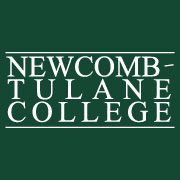Recently, I had the opportunity to attend the Society for Neuroscience’s 2018 Annual
Meeting held in San Diego, California, thanks to the generous donors of Newcomb-Tulane
College. This was an incredible experience that I truly believe helped form me as a researcher, student, and member of the neuroscience community. I learned so much from the talks I went to and the people I met and hope to return to future SfN conferences if I am able.
The first talk I went to at the conference was titled “How to Thrive as a Woman in
Neuroscience”. This was one of the talks I was most excited for, so it was definitely a motivating start to the weekend. There was a panel of four women at different stages of their careers talking about their personal lives, their research interests, and any challenges they might have faced as a woman in science. They had incredible advice about how to advocate for yourself, how to find supportive mentors, and how to know when to speak up about issues in the workplace. They also focused heavily on the importance of a work-life balance, and encouraging women to take time for ourselves and families for those that have children.
In addition to the motivating, empowering talk from those women, I also attended many
symposium talks on a wide range of topics throughout the week. Many of the talks I went to focused on cognition, behavior, decision making, learning, and memory. There were also a few sessions that were specifically about neural networks and computational neuroscience, which were especially interesting since I hope to work more on the computational side during grad school. One of the most interesting talks focused on brain development in teens and young adults, looking at cognitive development and decision-making with and without peer influence. Using this research, she acknowledged implications for justice policies and whether 18 years is developmentally the correct age to be tried as an adult in court. Another fascinating talk discussed parsing out the various components of the basal ganglia and how each of them impact decision making and risky behavior in mice.
As a senior, I am currently apply to graduate school programs in neuroscience,
specifically computational neuroscience. This conference also allowed me to make connections with representatives from various schools’ neuroscience graduate programs. There was a graduate school fair each day of the conference, allowing students to gather more information about the programs. Additionally, there were “socials” for a couple schools that I am applying to in the evening after some days of the conference. Attending these was a great experience as it allowed me to talk to some professors and current students in the Ph.D. programs in a more casual environment, which was definitely a beneficial experience.
Overall, I had an incredible experience attending the conference and am so grateful I was able to go. I have never been to a neuroscience conference before and was able to hear about studies and research techniques that I have not yet been exposed to through my classes or research lab. It was also great to witness thousands of researchers from all education levels, from other undergraduates to professors who have been in the field for 30 or more years. Especially as neuroscience is a relatively new field that is rapidly growing and progressing, witnessing researchers who have been in neuroscience for such a long time was extremely inspiring and motivating. Once again, I gained so much from the experience and definitely could not have attended without the support of Newcomb-Tulane College, so I am incredibly thankful.
Written by Emily Meyer, Dean’s Grant recipient, 2018
